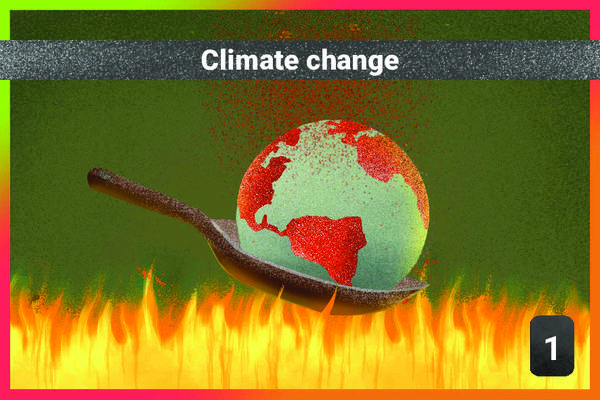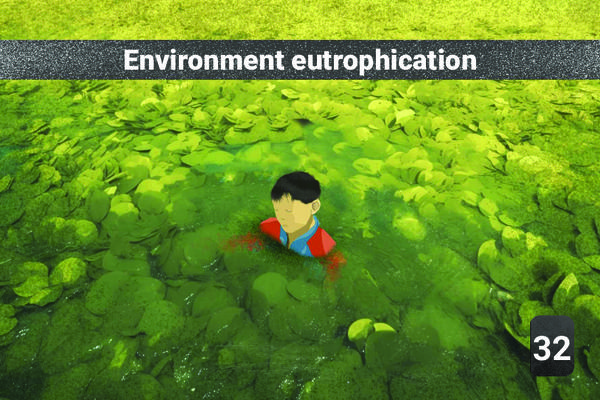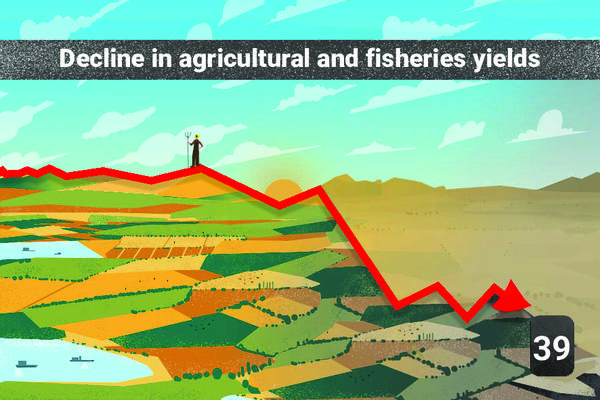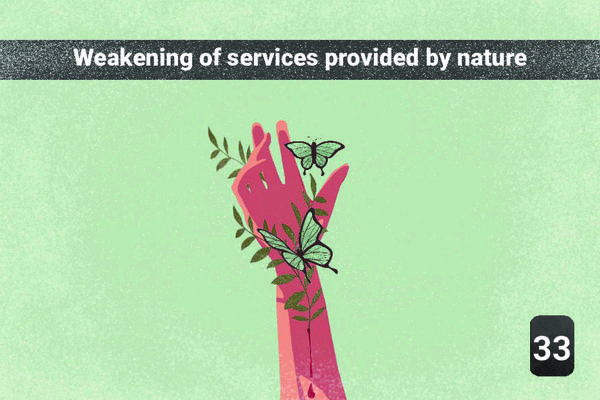34 - Anoxic or hypoxic areas
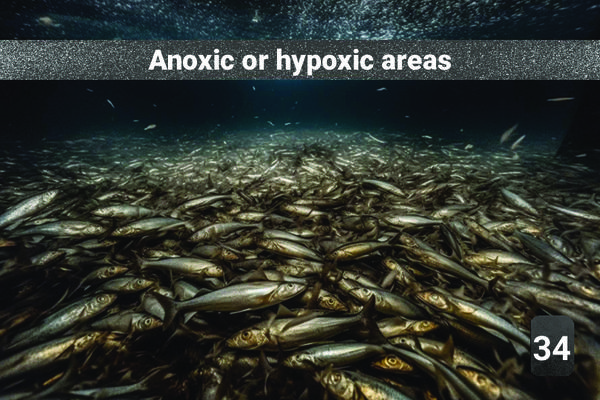
✏️ This explanation does not yet exist in your language… Just click here or send an email to fdn.memo@marc-antoinea.fr and suggest your translation!
2Causes
The amount of oxygen that can be dissolved in water depends on the temperature: the warmer it is, the less oxygen in the air dissolves in the water. Climate change therefore limits the dissolution of oxygen in water.
"Eutrophication of aquatic environments is characterized by excessive growth of plants and algae due to the high availability of nutrients. The algae that thrive on these nutrients absorb large amounts of oxygen when they die and Their proliferation causes the impoverishment and then the death of the present aquatic ecosystem: it no longer benefits from the oxygen necessary to live, this phenomenon is called “asphyxiation of aquatic ecosystems”. In 2003, a UN report estimated the number of dead zones in the oceans at 150; five years later, a study published by the Virginia Institute of Marine Sciences counted more than 400. Spread over 245,000 km2, these are mainly found in the South Pacific, the Baltic Sea, the coasts of Namibia or even in the Gulf of Mexico. In these regions, many species cannot survive. According to the IPCC, deoxygenation could lead to a loss of 15% of the global biomass of marine animals by 2100.
1Consequence
1Other possible consequence
In January 2018, the international working group “Global ocean oxygen network” indicated in the journal Science that the proportion of high seas areas devoid of all oxygen has more than quadrupled in 50 years (150 to 450 dead zones identified). Low oxygenated sites located near the coasts (including estuaries) have increased tenfold since 1950. These areas have increasingly significant impacts on fishing and ecosystems. Fish can escape from these areas (but rapid loss of consciousness possible). On the other hand, molluscs and crustaceans have too low a movement speed and die quickly.

